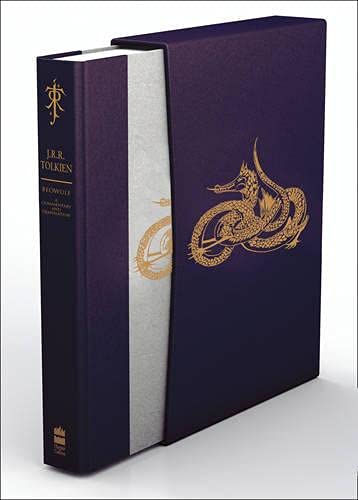Is the old Silmarrillion in BOLT the same as the new one?
23 Jan, 2009
(edited)
2009-1-23 6:55:48 PM UTC
Edited by Kham�l on 2013-4-24 7:58:52 PM UTC
Edited by Kham�l on 2013-4-24 8:32:36 PM UTC
Edited by Kham�l on 2013-4-24 8:32:36 PM UTC
2009-1-23 6:55:48 PM UTC
Is the old Sillmarrillion in BOLT the same as the new one?
Eric The Red
Eric The Red
Have a wee read of those 12 books, and perhaps it will be a little clearer...  No, seriously, you'll need to read the HoME; all of it
No, seriously, you'll need to read the HoME; all of it  .
.
BH
 No, seriously, you'll need to read the HoME; all of it
No, seriously, you'll need to read the HoME; all of it  .
.BH
Yep, that means "no". The HoME is largely about the evolution of Tolkien's middle-earth related writings. It wouldn't make much sense to print an identical Silmarillion as part of HoME. I personally don't find BoLT particularly interesting (and I'm surprised that HoME ever made it past that volume). I really enjoyed everything from 'The Return of the Shadow' onwards, but can happily leave the first 5 volumes on the shelf with only the occasional browse...
Stu
Stu
Indeed, the answer is basically no. I think if you want to put the published Silmarillion in context, you really have to read HoME; altho' the Hx LotRs is perhaps not essential.
Funny Stu, I think (I'm guessing tho', since I was a small child when this series first came out!) most people when the series came out quite like BoLTs; and were quite disappointed at some of the later books. Perhaps because the BoLTs books can be viewed (and read) as stand alone volumes; and don't 'interfere' with the published Silmarillion so much as some of the later volumes do.
Personally I'm the least interested (hard to say that!; still very interested...) in the volumes that cover LotRs, from a 'Middle-earth' perspective i.e. the are really (to me) primary world texts, showing Tolkien the author; very interesting just like Rateliff's Hx Hobbit. But Shaping, MR, Jewels, & Peoples really have an abundance of 'new' material so to speak. These (in my mind) sit in a hazy, indistinct world between primary world Tolkien (biography, author), and secondary world Tolkien (Middle-earth).
This cross-over between primary and secondary reaches it most complex in these later volumes: this 'soup' of redactors, translations, oral tradition, texts, 'lost' texts, multiple texts, history, conflicting versions, condensed story, authorship, editorship, publication etc etc -something which I feel plays out in the real history of the published Silmarillion i.e. the work of father & son (and Kay!). Which I suppose strikes at the heart (if my stab at explaining why I think I like Tolkien made any sense!) of why I'm totally obsessed with The Silmarillion .
.
BH
Funny Stu, I think (I'm guessing tho', since I was a small child when this series first came out!) most people when the series came out quite like BoLTs; and were quite disappointed at some of the later books. Perhaps because the BoLTs books can be viewed (and read) as stand alone volumes; and don't 'interfere' with the published Silmarillion so much as some of the later volumes do.
Personally I'm the least interested (hard to say that!; still very interested...) in the volumes that cover LotRs, from a 'Middle-earth' perspective i.e. the are really (to me) primary world texts, showing Tolkien the author; very interesting just like Rateliff's Hx Hobbit. But Shaping, MR, Jewels, & Peoples really have an abundance of 'new' material so to speak. These (in my mind) sit in a hazy, indistinct world between primary world Tolkien (biography, author), and secondary world Tolkien (Middle-earth).
This cross-over between primary and secondary reaches it most complex in these later volumes: this 'soup' of redactors, translations, oral tradition, texts, 'lost' texts, multiple texts, history, conflicting versions, condensed story, authorship, editorship, publication etc etc -something which I feel plays out in the real history of the published Silmarillion i.e. the work of father & son (and Kay!). Which I suppose strikes at the heart (if my stab at explaining why I think I like Tolkien made any sense!) of why I'm totally obsessed with The Silmarillion
 .
.BH
An interesting post touching on this topic was recently made over at Michael Martinez' blog:
http://tolkien-studies.com/blog/index ... es_there_is_an_official_t
It is a great article, about how Wikipedia (and really, any Tolkien wiki online) suffers from trying to apply too much "canon" to an author who clearly never finished editing and re-editing his world.
http://tolkien-studies.com/blog/index ... es_there_is_an_official_t
The Silmarillion is not, as some people have argued, in any way a rewrite of The Book of Lost Tales. J.R.R. Tolkien certainly carried forward ideas for characters, themes, and plots but he started his legend-making anew and in no way expressed any intention to incorporate The Book of Lost Tales into his legendarium.
It is a great article, about how Wikipedia (and really, any Tolkien wiki online) suffers from trying to apply too much "canon" to an author who clearly never finished editing and re-editing his world.












 2464
2464 1.09M
1.09M